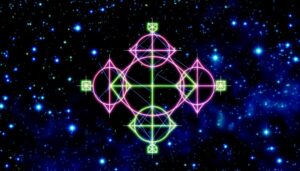What is the Meaning of the Tree of Life Symbol?
The Tree of Life symbol is rich with historical and cultural meanings, embodying interconnectedness, eternal life, and the cyclical nature of existence. Originating in Mesopotamian art, it was later embraced by cultures such as the Egyptians, Celts, and Norse, each interpreting it through their unique mythologies and worldviews.
In Ancient Egypt, it illustrated divine nourishment and cosmic balance. Norse mythology's Yggdrasil connected the nine domains, symbolizing resilience.
Celtic traditions viewed it as a bridge between earthly and spiritual spheres. Additionally, in Buddhism, it represents enlightenment and spiritual growth.
Exploring various cultural contexts reveals the depth of this enduring symbol.
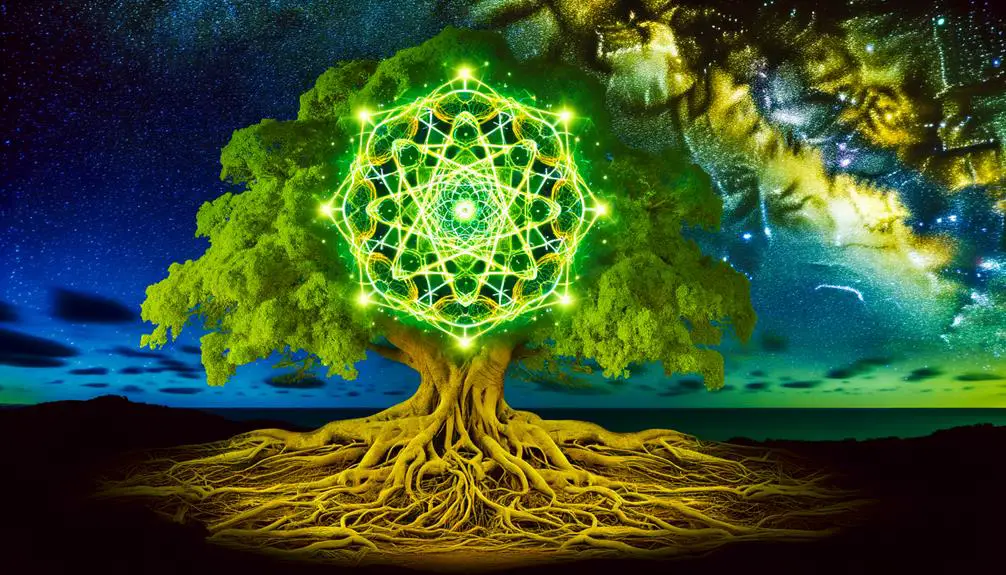
Key Takeaways
- Represents interconnectedness and eternal life across various cultures.
- Symbolizes cosmic balance and the cyclical nature of existence.
- Emphasizes themes of growth, resilience, and personal development.
- Illustrates the connection between the heavens, earth, and underworld.
- Depicts spiritual enlightenment and unity in diverse traditions.
Historical Origins
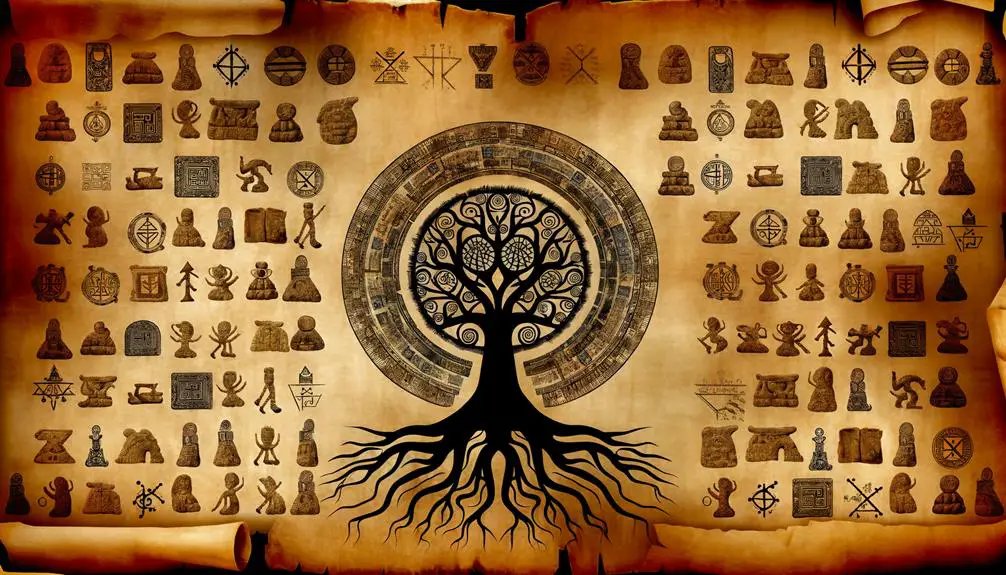
Tracing the historical origins of the Tree of Life symbol reveals its deep-rooted significance across various ancient cultures and civilizations. This emblematic motif first emerged in Mesopotamian art, where it represented interconnectedness and eternal life.
Sumerians depicted it as a series of nodes and crisscrossing lines, signifying the union of heaven and earth. Similarly, the Assyrians and Babylonians embraced the Tree of Life, embedding it in their religious and mythological narratives.
In ancient Persia, it was associated with the concept of eternal life and spiritual enlightenment, often depicted within the Zoroastrian tradition. These diverse cultural interpretations underscore a universal human quest to understand life's mysteries and the cosmic order, reflecting the timeless and profound essence of the Tree of Life symbol.
Symbolism in Ancient Egypt
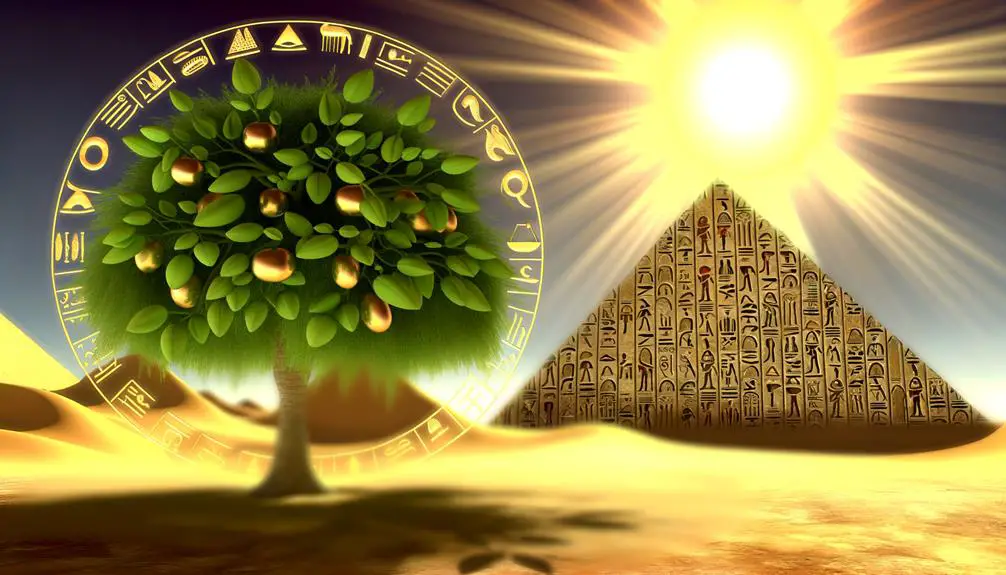
In Ancient Egyptian culture, the Tree of Life symbol was intricately linked to mythology, particularly through its association with the gods and the concept of eternal life. Represented in hieroglyphics, this symbol often depicted a sacred tree from which the gods drew sustenance, illustrating its integral role in religious and spiritual narratives.
These depictions underscore the Tree of Life's significance in conveying themes of creation, interconnectedness, and divine nourishment.
Egyptian Mythology Connections
Ancient Egyptian mythology imbued the Tree of Life with profound significance, symbolizing concepts of creation, eternal life, and the interconnectedness of all forms of existence. This emblem was intricately linked to the gods and the cosmos, often depicted in tombs and temples to represent divine nourishment and immortality.
The Tree of Life was seen as a cosmic axis connecting the heavens, earth, and the underworld, embodying a sacred nexus of life's cycle.
- Osiris: Often associated with regeneration, he was depicted near the tree.
- Isis and Hathor: Goddesses linked with the tree through nurturing and fertility.
- Persea Tree: A specific tree often symbolized the concept.
- Sustenance: Believed to provide food and drink to the deceased.
- Cosmic Balance: Represented harmony in the universe.
Symbol in Hieroglyphics
The depiction of the Tree of Life in hieroglyphics intricately intertwines with the broader symbolic lexicon of ancient Egypt, serving as an essential emblem of divine authority, cosmic order, and the eternal cycle of life and death.
Often illustrated in tombs and temples, the Tree of Life was depicted with roots firmly planted in the earth and branches reaching towards the heavens, symbolizing the connection between the mortal and divine domains. Hieroglyphically, it was associated with the gods Osiris and Isis, representing regeneration and protection.
This symbol encapsulated the Egyptian belief in Ma'at—universal balance and justice—emphasizing the interdependence of life, death, and rebirth.
The Tree of Life thereby stood as a powerful visual representation of ancient Egyptian cosmology.
Norse Mythology
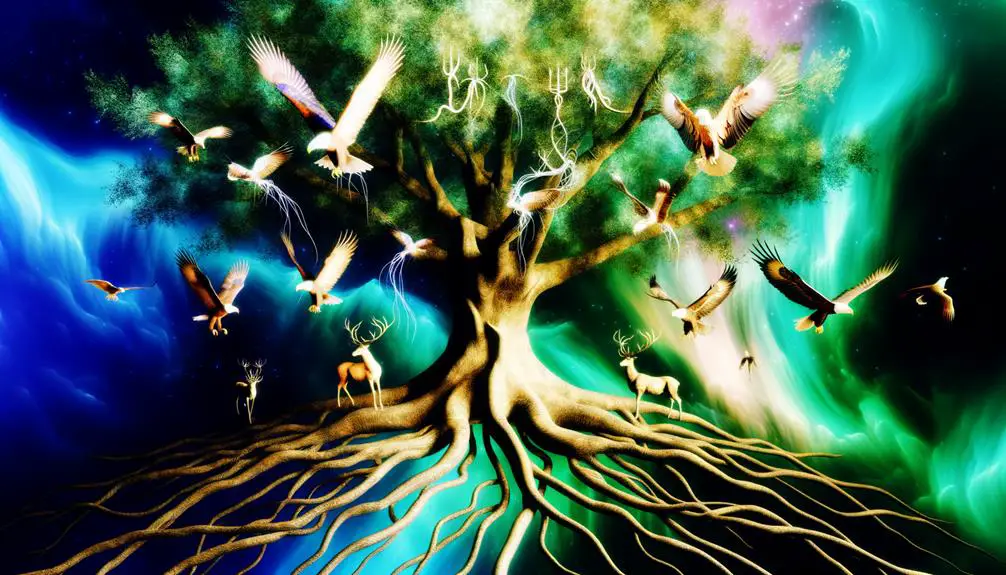
Norse mythology presents the Tree of Life, known as Yggdrasil, as a colossal ash tree that forms the central axis of the cosmos, connecting the Nine Realms and sustaining the universe. This immense tree is pivotal in the cosmological structure, bridging domains of gods, humans, and the deceased.
Yggdrasil's branches and roots extend into various dimensions, signifying interconnectedness and balance within creation.
- Nine Realms: Yggdrasil connects all domains, from Asgard to Midgard and Hel.
- Roots and Wells: Roots reach into sacred wells, such as Mimir's Well, symbolizing wisdom.
- Guardian Creatures: Entities like the dragon Nidhogg and the eagle Veðrfölnir protect and interact with the tree.
- Ragnarök: Yggdrasil is central in prophetic visions of apocalypse and rebirth.
- Symbolic Resilience: Represents endurance, growth, and the cyclical nature of life.
The Celtic Tradition
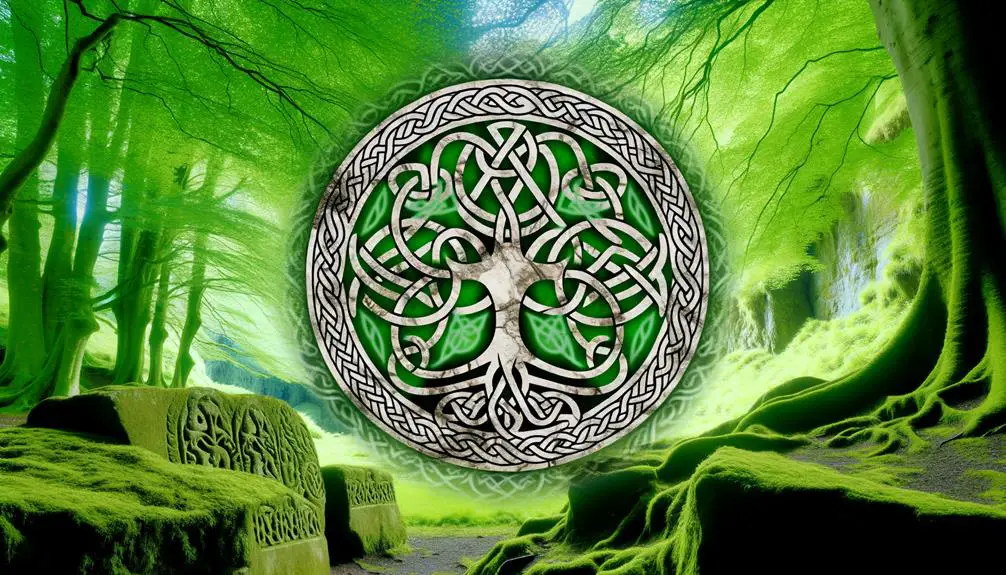
While Norse mythology centers around the cosmic ash tree Yggdrasil, the Celtic tradition offers its own interpretation of the Tree of Life, known as Crann Bethadh, which symbolizes harmony, ancestry, and the interconnection of all forms of life.
In Celtic culture, trees were considered sacred bridges between the earthly and spiritual domains. The Crann Bethadh, depicted with branches reaching skyward and roots delving deep into the earth, represents balance and unity within the universe.
It was often situated at the center of Celtic villages, serving as a communal focal point. The intricate knotwork in Celtic art further emphasizes the Tree of Life's role as an emblem of eternal cycle and interconnectedness, reinforcing the idea of life's continuity and resilience.
Buddhist Interpretations
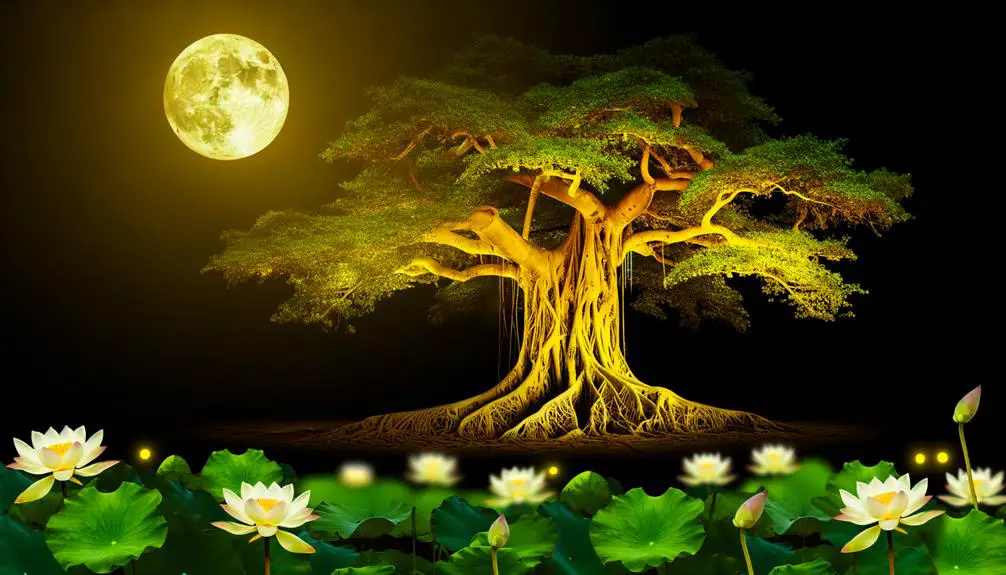
In Buddhist interpretations, the Tree of Life is often identified with the Bodhi tree, under which Siddhartha Gautama attained enlightenment, symbolizing spiritual awakening, growth, and the interconnectedness of all sentient beings. This sacred fig tree represents the zenith of spiritual journey and the profound realization of the interconnected web of existence.
The Bodhi tree is a powerful emblem of:
- Enlightenment: The ultimate goal of attaining Nirvana.
- Resilience: Enduring the trials of life to achieve spiritual growth.
- Connection: The unity of all living beings within the cycle of Samsara.
- Wisdom: The deep understanding that transcends ordinary knowledge.
- Shelter: Providing refuge and a place for meditation and reflection.
These elements underscore the tree's essential role in Buddhist philosophy and practice.
The Kabbalistic Tree
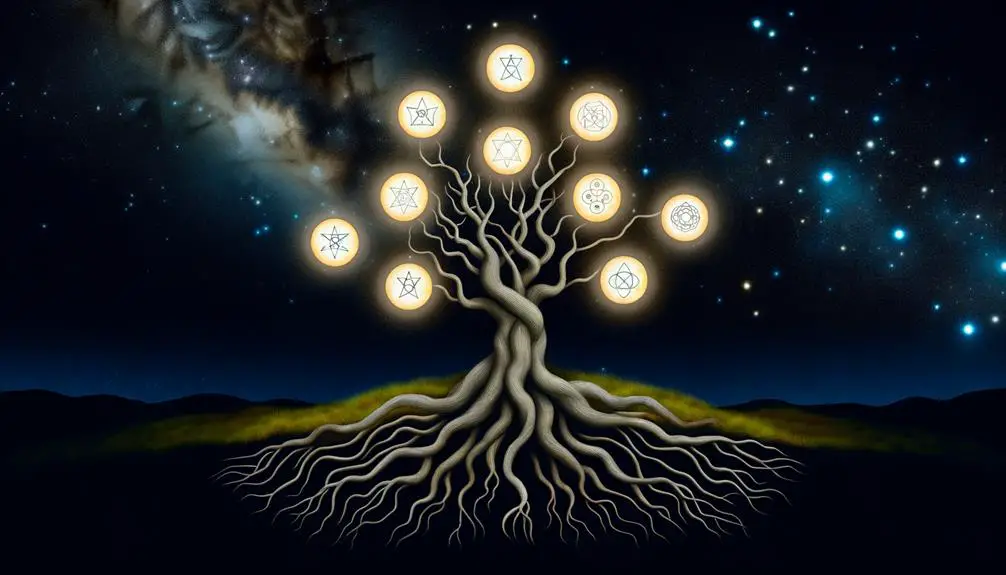
The Kabbalistic Tree, also known as the Tree of Life in Kabbalah, serves as a complex symbol that encapsulates the mystical structure of the universe and the path to spiritual enlightenment. Comprising ten interconnected spheres or 'sephiroth,' the Tree illustrates the emanations through which the divine essence manifests in the material world.
Each sephirah represents a particular attribute of God, ranging from crown (Keter) to kingdom (Malkuth), and serves as a step in the soul's ascent towards divine understanding. The interconnecting paths between the sephiroth symbolize the various stages and challenges encountered in spiritual development.
This symbolic representation provides a profound framework for understanding the intricate relationships between the divine, the cosmos, and human existence.
Modern Spirituality
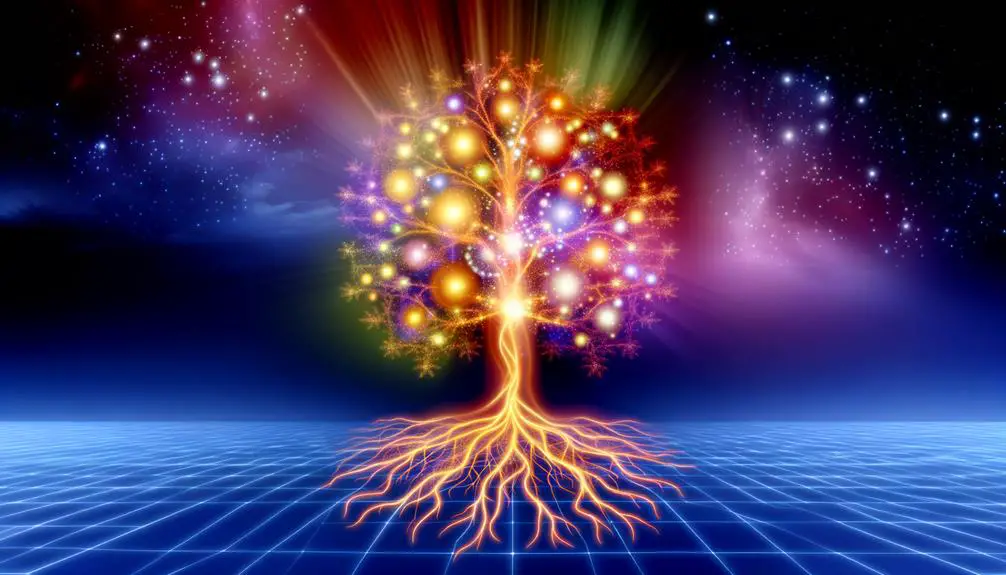
In the context of modern spirituality, the Tree of Life symbol has become a profound representation of personal growth and self-realization, signifying the interconnectedness of all life and the potential for individual transformation.
Its intricate design is often used in meditation and mindfulness practices, serving as a focal point to cultivate inner peace and spiritual awareness.
This contemporary adaptation highlights the enduring relevance of the Tree of Life in guiding individuals toward holistic well-being and enlightenment.
Personal Growth Symbolism
Modern spirituality often interprets the Tree of Life symbol as a profound representation of personal growth, illustrating an individual's journey towards self-realization and enlightenment. This symbolic interpretation emphasizes the interconnectedness of all life stages and experiences, essential for holistic development.
The Tree of Life embodies several key elements of personal growth:
- Roots: Representing grounding and foundational values.
- Trunk: Symbolizing strength and stability in one's core self.
- Branches: Reflecting expansion, exploration, and diverse opportunities.
- Leaves: Signifying growth, change, and the fruits of one's labor.
- Cycles: Demonstrating the continuous nature of personal development and rebirth.
Meditation and Mindfulness
Amidst contemporary spiritual practices, meditation and mindfulness are revered as transformative tools for cultivating a deeper connection with the self and the universe, echoing the integrative symbolism of the Tree of Life.
This ancient emblem, representing interconnectedness and growth, parallels the objectives of mindfulness practices that seek to harmonize mind, body, and spirit. Through meditation, individuals can root themselves in the present moment, akin to the Tree of Life grounding its roots deeply into the earth.
Mindfulness, on the other hand, fosters an awareness that branches out, touching every aspect of our existence. By nurturing these practices, one can achieve a balanced and enlightened state, mirroring the holistic essence encapsulated in the Tree of Life symbol.
Artistic Representations
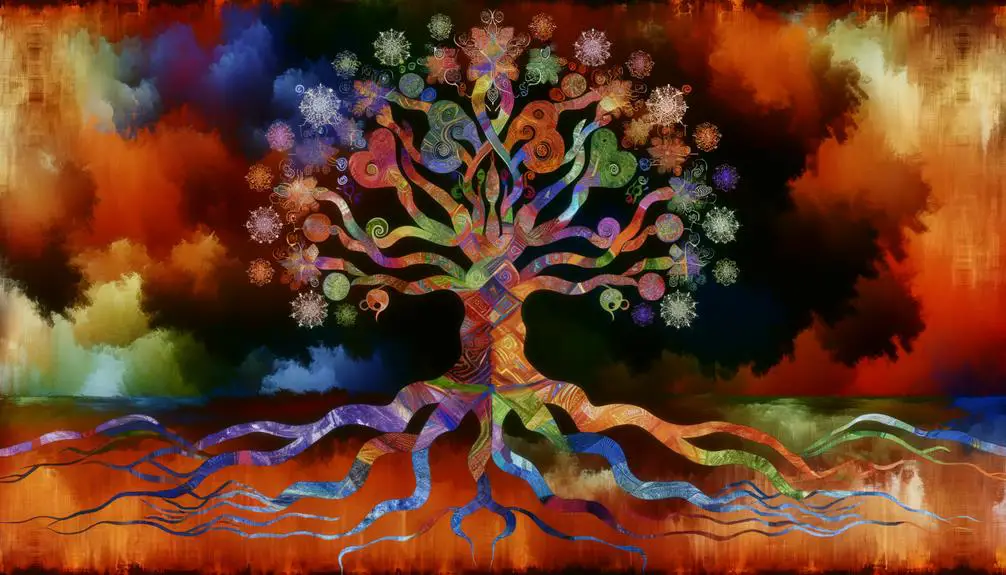
How has the Tree of Life symbol been artistically represented throughout history, and what cultural influences can be discerned in its myriad depictions?
From ancient civilizations to modern interpretations, the Tree of Life has been rendered in various styles, each reflecting the cultural milieu of its time.
In Egyptian art, it appears as the sacred Sycamore tree, symbolizing eternity.
Celtic representations often include elaborate knotwork, emphasizing interconnectedness.
Islamic art features stylized, geometric trees, resonating with themes of paradise.
In Chinese art, the symbol is depicted with phoenixes and dragons, indicating balance and harmony.
Native American interpretations include the Sacred Tree, which stands as a conduit between the earthly and spiritual domains.
- Egyptian Sycamore: Eternity
- Celtic Knotwork: Interconnectedness
- Islamic Geometric Trees: Paradise
- Chinese Phoenixes and Dragons: Harmony
- Native American Sacred Tree: Spiritual Conduit
Tattoos and Personal Meaning
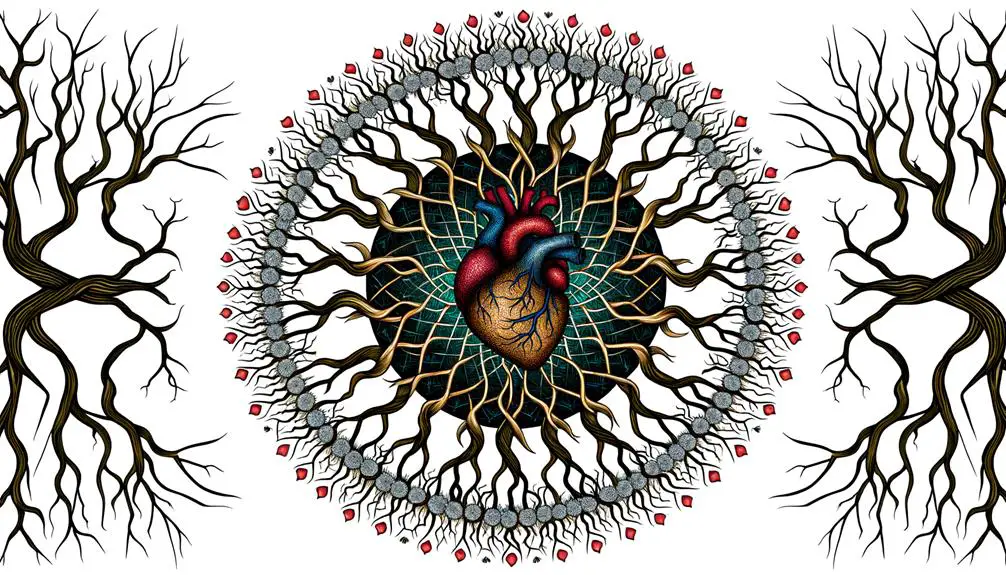
Tattoos featuring the Tree of Life have gained popularity due to their rich symbolic significance, often manifesting in intricate designs that are both aesthetically pleasing and deeply meaningful.
These tattoos can serve as personal emblems, reflecting individual beliefs in growth, interconnectedness, and resilience.
Additionally, the cultural interpretations of the Tree of Life add layers of context, making each tattoo uniquely significant to its wearer.
Popular Tattoo Designs
In recent years, the Tree of Life symbol has emerged as a prominent design in the world of tattoo artistry, resonating deeply with individuals due to its rich tapestry of meanings and cultural significance. This emblem encapsulates various elements that make it particularly appealing in tattoo design:
- Interconnectedness: Illustrates the relationship between all living things.
- Growth: Symbolizes personal and spiritual development.
- Strength: Represents resilience and enduring power.
- Roots and Branches: Depicts one's heritage and future aspirations.
- Eternal Life: Emphasizes the cyclical nature of life and immortality.
Its intricate design allows for creative expression while maintaining its profound symbolism. The Tree of Life's flexibility guarantees it can be tailored to individual preferences, making it a popular choice among tattoo enthusiasts seeking meaningful body art.
Symbolic Personal Significance
For many individuals, tattoos serve as deeply personal symbols that encapsulate their unique experiences, values, and identities, making each piece of body art a profound reflection of one's inner self.
The Tree of Life is a particularly potent emblem in this context, often chosen for its rich symbolism. It represents growth, strength, and interconnectedness, resonating with those who value personal development and resilience.
Each element of the tree, from its roots to its branches, can carry individual significance, symbolizing grounding, growth, and the branching out of life's journey.
This multifaceted meaning allows the Tree of Life tattoo to be tailored to personal narratives, making it a versatile and deeply meaningful choice for body art.
Cultural Interpretations
Across various cultures, the Tree of Life symbol in tattoos is imbued with profound meanings that reflect communal beliefs, spiritual traditions, and historical narratives. The symbol's intricate design often encapsulates the essence of life, connection, and growth.
Different cultures interpret the Tree of Life uniquely:
- Celtic Traditions: Represents the interconnectedness of all life, rebirth, and immortality.
- Nordic Mythology: Known as Yggdrasil, it signifies the cosmos' structure, interlinking different domains.
- Eastern Philosophies: Symbolizes harmony, balance, and the cyclical nature of existence.
- Native American Beliefs: Often associated with ancestors, wisdom, and the sacredness of nature.
- Modern Interpretations: Emphasizes personal growth, resilience, and the individual's journey through life.
These interpretations provide deep contextual layers to the symbol's personal meaning in tattoos.
Global Cultural Significance
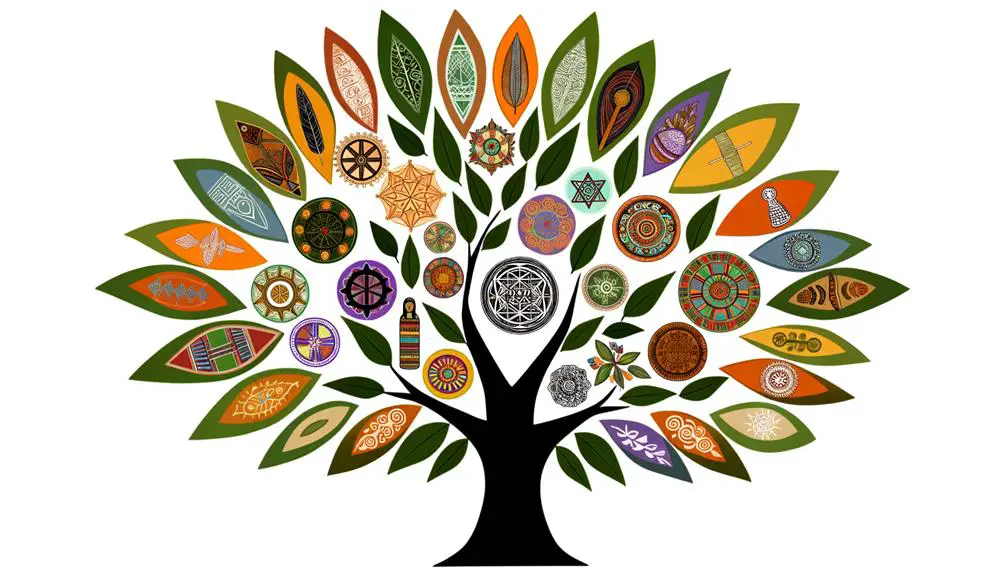
Although the Tree of Life symbol manifests uniquely across various cultures, its universal representation as a connection between the heavens, earth, and the underworld highlights its profound global cultural significance.
In ancient Egypt, it symbolized eternal life and regeneration, while Norse mythology revered Yggdrasil, the immense tree connecting nine worlds.
Similarly, in Native American traditions, it represents harmony and a link between all forms of life. The symbol also appears in Buddhist art, denoting enlightenment and spiritual growth.
These varied interpretations underscore a shared human fascination with interconnectedness and continuity, transcending geographical and temporal boundaries. Such widespread reverence illustrates the Tree of Life's enduring role in expressing fundamental human beliefs about existence and the cosmos.
Conclusion
The Tree of Life symbol, permeating various cultures and epochs, epitomizes the interconnectedness of all existence.
In ancient Egypt, it signified eternal life; in Norse mythology, Yggdrasil connected all domains.
The Celts saw it as a bridge between earthly and spiritual domains, while Buddhist interpretations focus on enlightenment.
Modern spirituality continues to embrace its universal themes.
Just as roots and branches of a tree intertwine, the diverse interpretations of this symbol reflect humanity's shared quest for meaning.






